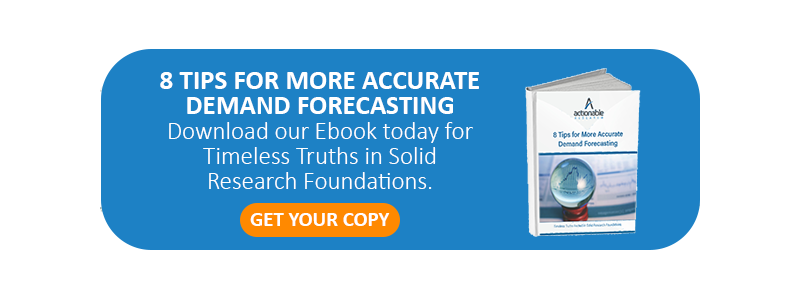New product or service development efforts often fall short of expectations. There are volumes of information written to address this problem, ranging from doing a more effective job of listening to customers to doing a better job with marketing campaigns and implementing the latest and greatest sales techniques.
Is the Problem Execution or the Products Themselves?
Good strategy and execution are critical; however, maybe the questions that should be asked are, “Should I be selling this product?” or “Is there enough evidence my investment will produce the returns I will need to receive in order to bring it to market?”
Companies who have experienced higher product success rates have gating processes in place. In order for a project to move to manufacturing, it must pass through “gates.” These gates ensure the product meets the company’s new product investment standards. The organizations that are most successful invest in primary marketing research to inform the gating process and, if the results are favorable, will run a complementary volumetric forecast to better understand revenue expectations based on a number of factors. Some of these factors are common to all volumetric forecasts; others are only relevant to a particular product.
Product or Service Adoption Study Results Are Not Enough
What I have found in my tenure as a primary market researcher is many companies do not run a volumetric forecast prior to product introduction, but rather rely on information from product adoption study results performed during product development. Or worse, some companies do not even perform new product or service adoption studies at all.
Assuming adoption research is performed, it is important to point out the difference between a market adoption study and a volumetric forecast:
- A Product or Service Adoption Study is a quantitative primary research effort, which seeks to understand a target audience’s product adoption process in more detail, and to simulate the portion of the process to offer insight into likely market behavior. Its primary endpoint is to offer input into product development or product marketing and sales efforts, including an estimate of what percentage of the population would be likely product users or triers.
- A Volumetric Forecast is an attempt to project the amount of product or service units that will be purchased over a fixed time interval, including new purchases and repurchases.
Notice the key element is number of “units” over a time interval. Using any tool that does not allow for a consideration for unit sales in a rigorous way over a time interval will not be effective. The product or service adoption study offers insight into the percentage of the market (assuming an effective sampling plan) that will purchase a product at a final, hypothetically steady state. The time-based volumetric forecast is quite a different thing, requiring inputs into the drivers and governors of unit sales as a function of time.
While this may be no big a-ha moment for many of you reading this post, it is a very important fact; product or service adoption research results are not a volumetric forecast.
When considering the rate of product failures today (not much better than it has ever been) and taking into account the number of companies who either do not perform a volumetric forecast or only use product adoption studies to make product or service go / no-go decisions, it stands to reason more frequent and better volumetric forecasting will increase product success rates. Done correctly, product or service adoption research coupled with volumetric forecasting will:
- Improve focus on the different stages in the adoption process;
- Assure the right resources are available to support product sales and support efforts over time;
- Keep products that are not market-worthy off the market, at least until they are better.
In short, proper volumetric forecasting will help with both execution (resourcing decisions) and determining if the product is right for the market (gating decisions).
What’s Next: The Actionable Research Volumetric Forecasting Blog Series
Read more of our Forecasting series:
- Forecasting 101: Why Every Business Needs It
- Control Customer Buying Cycles through Innovation, Improve Forecasting
- Product Development and Adoption Modeling: Forecasting Product Success
- Higher Product Success Rates Lie in Better Volumetric Forecasting
How We Can Help
Actionable Research is a primary marketing research firm with a significant focus on upstream research processes, such as initial concept testing to discrete choice modeling (trade-off analyses such as conjoint), price elasticity, best price determination and optimal configuration discovery and more. Our years of experience performing Medical & Dental, Digital Tech and Consumer research have provided us with the industry knowledge and expertise we leverage to help our clients efficiently develop insights they need to make effective business decisions. Contact us today for more information about how our carefully design tools, methods and processes can meet your research needs.
*This article was originally published in April of 2016 and has since been updated to reflect the changing market.



